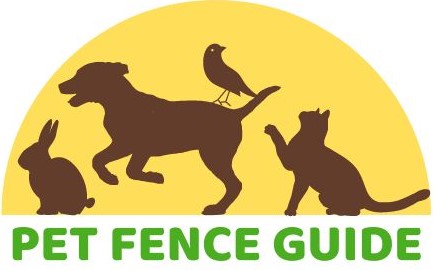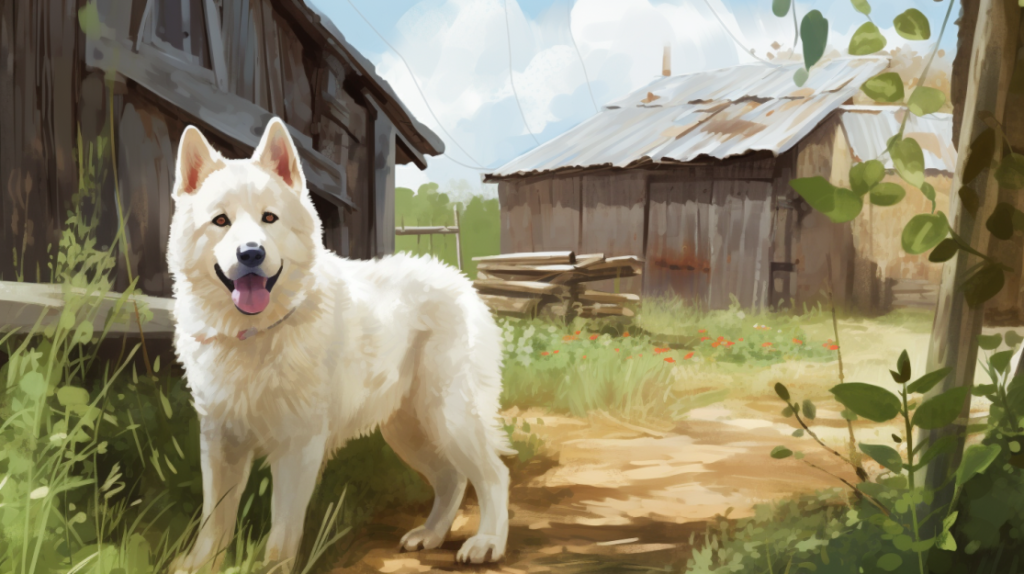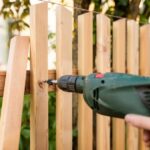If you’re a dog owner, you understand the joy of seeing your furry friend frolic and play freely in your yard. But ensuring their safety and containment is crucial. That’s where a well-built fence comes into play. But how far apart should fence posts be for dogs?
Dog fences are meant to protect dogs, plus give your home a beautiful aesthetic view. If fences are not built properly or have poor maintenance. The chances of a dog slipping away get increased. Secondly, if the fence is not as per the dog’s breed or adjusted according to his behavior, it might create some problems.
This seemingly simple question requires thoughtful consideration to create a secure and dog-friendly enclosure. In this comprehensive guide, we’ll unravel the mysteries of fence post spacing, explore factors to consider and provide expert tips to keep your canine companion wagging happily within the bounds of their own little paradise.

Understanding the Purpose: The Fence for Fido
Table of Contents
ToggleA dog-friendly fence serves multiple purposes, providing safety, containment, and a sense of freedom for your canine companion. It helps keep them safe from potential hazards outside the yard, prevents encounters with unwanted critters, and gives you peace of mind knowing your fur baby can’t wander off into mischief. A well-built fence can enhance the curb appeal of your property while allowing your pup to enjoy the outdoors without constant supervision.
Determining the Right Spacing: Size Matters
The spacing between fence posts is a critical factor in constructing a secure enclosure for your dog. The spacing largely depends on the size and breed of your furry friend. For larger and more active breeds, such as German Shepherds or Labrador Retrievers, closer fence post spacing of around 5 to 6 feet is recommended. This prevents them from squeezing through gaps and minimizes the risk of injuries from attempts to escape.
On the other paw, for smaller breeds or less active dogs, spacing the fence posts 8 to 10 feet apart might suffice. This ensures they have ample space to roam freely without feeling constrained. However, always consider the individual personality and behavior of your dog; some small dogs may be excellent jumpers, and additional spacing won’t deter their escapades.
Exploring Fencing Materials: From Wood to Wrought Iron
Choosing the right fencing material is crucial in creating a durable and pet-friendly enclosure. Various materials, such as wood, vinyl, chain link, and wrought iron, offer different advantages. Wood fences, while visually appealing, may require more maintenance over time, as dogs might chew or scratch them.
Vinyl and chain-link fences are low-maintenance and effective for most dog breeds. Wrought iron fences provide excellent security and visibility, but their vertical bars should be close enough to prevent smaller dogs from squeezing through.
Opting for a fence with minimal gaps between posts and panels is essential for the safety of your furry friend. This prevents them from getting their heads or paws stuck in between, avoiding any unpleasant situations.
The Ideal Height: Jumpers and Leapers Beware!
Beyond post spacing, the height of the fence plays a significant role in containing your dog. A common fence height for most breeds is around 4 to 6 feet. Taller fences (6 feet or higher) are recommended for breeds known for their jumping abilities, like Border Collies or Australian Shepherds.
It’s a good idea to observe your dog’s behavior to assess if it can clear a certain height. Remember, determined and agile dogs may surprise you with their ability to scale fences, so always err on the side of caution.
Digging Deeper: The Importance of Fence Depth
While focusing on the height and spacing of fence posts, it’s easy to overlook the depth of the fence. Digging is an inherent canine behavior, and some dogs are exceptional escape artists. To prevent your four-legged Houdini from digging their way to freedom, ensure your fence extends at least 2 to 3 feet below ground level. Burying the fence deep enough will discourage your furry friend from digging their way to the other side.
Puppy-Proofing the Fence: Small Dog, Big Adventure
If you have a small dog, their diminutive size doesn’t mean they lack big adventurous spirits. To puppy-proof your fence for these curious explorers, ensure the gaps between pickets or fence panels are small enough to prevent them from squeezing through. For chain-link fences, consider using smaller mesh sizes to avoid escape attempts. Keep an eye out for any potential footholds, as crafty canines can use nearby objects to climb or jump over the fence.
Fence Post Installation: A DIY or Professional Job?
When it comes to fence post installation, you have two options: DIY or hiring a professional. While a DIY project can be fun and cost-effective, it requires time, effort, and some handy skills. If you choose the DIY route, ensure that you follow the manufacturer’s instructions and consult local building codes to ensure compliance.
On the other paw, hiring a professional fence contractor offers expertise and guarantees a sturdy and secure enclosure. Professionals can accurately assess your dog’s needs and recommend the best materials and spacing for your unique situation. It also saves you from potential headaches and costly mistakes.
Weathering the Elements: Seasonal Considerations
Weather can significantly affect the longevity and effectiveness of your dog’s fence. Extreme temperatures, heavy rainfall, and harsh sunlight can take a toll on materials over time. Regularly inspect your fence for any signs of damage or wear and perform routine maintenance to keep it in tip-top shape. Sturdy materials, like vinyl and wrought iron, often stand up well to various weather, making them excellent choices for dog-friendly fencing.
Doggy Houdinis: Preventing Escape Attempts
Some dogs seem to possess a magical ability to escape from even the most secure-looking enclosures. Preventing your pup’s Houdini acts requires a few additional measures. Consider adding a “dig guard” to the bottom of the fence, which can be made of chicken wire or cement. This discourages digging and keeps your furry friend from tunneling their way out.
You can also extend the height of the fence by installing coyote rollers or leaning fence extensions. These are angled barriers that make it nearly impossible for your pup to climb or jump over the fence.
Maintaining Your Dog’s Playground: A Lasting Enclosure
A dog-friendly fence is an investment in your pet’s safety and happiness. To ensure your dog’s playground remains a secure and enjoyable space, regular maintenance is key. Periodically check for loose screws, damaged pickets, or rust in metal fences. Trim any vegetation near the fence line, as it can offer a stepping stone for ambitious escape attempts. Moreover, inspect the fence perimeter for any potential weak points and address them promptly.

Conclusion
I hope that after reading this article, you have developed enough understanding of the matter. Dogs are splendid companions, and their safety should be an utmost concern for all of us. These tiny adjustments not only make them stay pleasant with us. It also ensures the protection and safety of our home and our little friend.
FAQ 1: How far apart should fence posts be for dogs?
Answer: The ideal spacing between fence posts for dogs depends on their size and behavior. For larger and more active breeds, like German Shepherds or Labrador Retrievers, closer spacing of around 5 to 6 feet is recommended. This prevents them from squeezing through gaps and minimizes the risk of escape attempts. For smaller breeds or less active dogs, spacing the fence posts 8 to 10 feet apart might suffice, providing them with enough room to roam freely without feeling constrained.
FAQ 2: Can I use old bones instead of fence posts?
Answer: As much as your pup would love it, using old bones as fence posts is not recommended. While it might sound playful, bones won’t provide the necessary stability and durability for a secure enclosure. Stick to traditional materials such as wood, vinyl, or metal to ensure the safety of your furry friend.
FAQ 3: What height should the fence be for my dog?
Answer: The height of the fence is an essential consideration to prevent your dog from jumping over. For most breeds, a fence height of 4 to 6 feet is sufficient. However, if you have a breed known for their jumping abilities, like Border Collies or Australian Shepherds, consider a taller fence of 6 feet or more.
FAQ 4: Can my small dog escape through the fence?
Answer: Small dogs can be surprisingly skilled at finding escape routes. To prevent them from squeezing through, ensure that the gaps between pickets or fence panels are small enough. For chain link fences, consider using smaller mesh sizes to deter escape attempts by smaller breeds.
FAQ 5: My dog is a digging expert. How can I prevent escape attempts?
Answer: Digging is a natural behavior for dogs, and some are excellent escape artists. To discourage digging under the fence, make sure it extends at least 2 to 3 feet below ground level. Additionally, consider adding a “dig guard” made of chicken wire or cement to the bottom of the fence to prevent tunneling.
FAQ 6: Should I install the fence myself or hire a professional?
Answer: The decision to install the fence yourself or hire a professional depends on your skills, time, and budget. DIY installation can be cost-effective, but it requires careful planning and execution. Hiring a professional fence contractor ensures expertise and guarantees a secure enclosure tailored to your dog’s needs.
FAQ 7: What materials are best for a dog-friendly fence?
Answer: Various materials are suitable for a dog-friendly fence. Vinyl and chain link fences are popular choices due to their durability and low maintenance. Wood fences are visually appealing but may require more upkeep. Wrought iron fences provide excellent security and visibility, but ensure that the vertical bars are close enough to prevent smaller dogs from escaping.
FAQ 8: How do I maintain my dog’s fence?
Answer: Regular maintenance is crucial to keep your dog’s fence in good condition. Inspect the fence regularly for loose screws, damaged pickets, or rust. Trim any vegetation near the fence line that could aid escape attempts. Address any weak points promptly to maintain a secure and enjoyable space for your furry friend.







